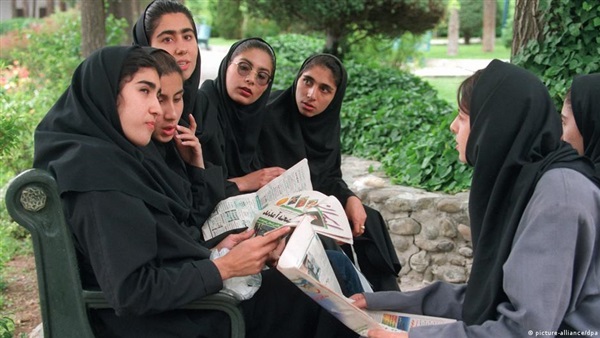Iran’s influence suddenly makes an issue of hijab for pupils in Gaza

Anti-regime protests in Iran that started with opposition to compulsory head-covering for women are drawing attention to a similar conflict in Gaza, the Palestinian-controlled territory governed by the Iran-supported Islamist group Hamas.
Pupils and teachers are complaining that school head teachers have been trying to impose the hijab on pupils at girls’ schools. They insist there is no compulsion in Palestinian law.
“My family never forced me to wear hijab but my headmistress called me out every day and insulted me for not wearing one,” said one girl, Malak Abu Hanoun, 17. “I have been kicked out of school for a couple of days and was asked to never come back unless I wore one.”
Gaza is officially part of the broader Palestinian entity that also includes the West Bank. In 2007 Hamas, an Islamist group linked to the Muslim Brotherhood, took over Gaza and became the de facto authority, while the Palestian Authority, which is secular in outlook, kept control over the West Bank. Talks to reunite the two have repeatedly failed.
Hamas has been supported by Iran, including with missiles and other weaponry, and while it is Sunni rather than Shia Muslim, it shares the Islamic Republic’s version of state-imposed religiosity.
This has brought the movement into conflict with civil society groups as well as many ordinary Gazans. Courts in Gaza have demanded female lawyers wear hijab in court, in the face of opposition from a syndicate of lawyers.
In schools, teachers complain that education is being made secondary to the spread of ideology.
In some state schools Hamas-backed preaching groups launched religious campaigns to promote the principles of Islam, visiting once or twice a week with approved sermons.
“Some teachers or heads would do whatever they can to burnish their images amongst their superiors, who are backed by the Hamas government,” said a 43-year-old English teacher, who asked just to be called Hala, in an all-girls secondary school in Gaza.
In September 2013 the Hamas government passed a controversial law segregating girls and boys above the age of nine in school. It has also tried to ban male teachers from state-run girls’ schools. Pupils say that head teachers often try to enforce dress codes at the start of the new school year in autumn.
One school in northern Gaza expelled two girls for entering with their hair uncovered and wearing jeans.
Others comply, but under protest. “We wear this hijab by force, against our will, because we want to attend our school, and if we don’t wear it, we lose so much and might not be allowed to go,” said one 16-year-old, who asked not to use her real name. One result is that increasingly parents are choosing to send daughters to private schools, where greater personal freedom is allowed. Others try to leave Gaza altogether.
Hamas denies that wearing the hijab is compulsory, even in schools, but these rules have nevertheless begun to spread to universities too. Privately, officials justify these practices by stressing the need “to preserve the Islamic identity of society”.
In Iran, protests that began with the suspicious death in custody of a 22-year-old woman, Mahsa Amini, who was arrested by the morality police in the Iranian capital Tehran for “improper” hijab, have spiralled into violent clashes with security forces in which more than 200 people have been killed.









